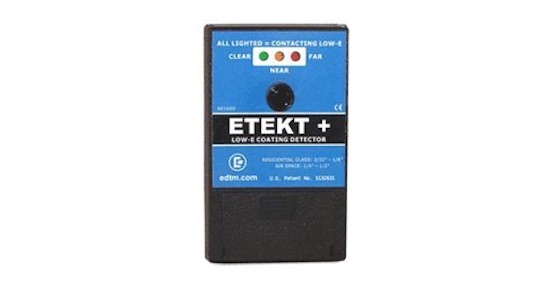Low E Glass Benefits
Low-E Glass Benefits TIPS
- Not new but a must-have on your windows
- Bounces heat back to its source - saves energy
- Soft and hard coat and films too
- Pro installers can get you the best Low-E CLICK HERE
- CLICK HERE to Get Tim's FREE & FUNNY Newsletter!
DEAR TIM: My husband and I will be building a new home soon. Our windows are available with optional low-E glass. Just what is low E glass? Does it really work?
Are there different types? Will it block ultraviolet (UV) light? Is the argon gas necessary? Do you think it is worth the extra money? E. R.
DEAR E. R.: Window glass was revolutionized in the 1970's.
Single Became Double
Insulated glass (two or more pieces of glass with a dead air space between) made its debut in the early 70's. Prior to this almost all window glass was a single pane.
Low-E Glass Next In Line
Low E glass was introduced in 1979. The E stands for emissivity. Low E glass works by reflecting heat back to its source. It does this by utilizing an ultra thin metallic coating on or in the glass.
Among other things, sunlight contains visible light, UV light, and infrared (IR) light. Visible light enables us to see things. Ultraviolet light damages your skin, wood, fabrics, and causes colors to fade.
Free & Fast Bids
IR = Infrared Bouncing Is Good
Infrared light is basically heat. Low E glass has the ability to allow visible light to pass while blocking certain amounts of UV light and IR light.
The infrared light in sunlight is powerful. When it strikes an object it heats it up. These objects can be your tile floors, furniture, sidewalks, patio furniture, etc. As these objects cool off, they emit a low powered form of IR light.
Cooler House In Summer / Warmer In Winter
Low E glass reflects this form of energy. In the summer this helps to keep your house cooler, as the heat from objects outside is kept outside. In the winter, all objects in your home are heated (by either the sun or your furnace). This heat is also bounced back into your house by the low E glass.
Hard & Soft Coat
There are two types of low E glass: hard coat and soft coat. Tin is applied directly to the molten glass to make hard coat low E glass. It is hard to scratch the tin off the glass. The soft coat process commonly involves the application of a thin layer of silver while the glass is in a vacuum.
This coating is delicate. Soft coat low E glass is always sandwiched with another piece of glass. It can also oxidize if exposed to air. Argon gas is sometimes used to prevent this oxidation. This gas also acts as an additional insulator.
Low-E Glass Detector
If you need to test a window to see if it does have low-e glass, you're in luck. There are high-tech low-e glass detector tools that do this. Here's one:
Helps Reduce Condensation
Low E glass helps to reduce condensation on glass. The inside surface temperature of the glass is warmer.
The differences can be dramatic. Imagine a cold night with an outside temperature of 0 degrees and a 15 mph wind.
The inside temperature of a single pane window would be approximately 26 degrees. Regular double pane glass might register 35 degrees. Hard coat low E glass would be very near 49 degrees. And weighing in at champ would be soft coat low E glass at 62 degrees.
Low-E Film
Some glass manufacturers have gone even farther. They have suspended thin, low E transparent films in between pieces of glass. This system has excellent performance characteristics. Some of these films can block 99.5 percent of UV light. Some boast an insulating value twice that of soft coat low E glass.
Low E glass is worth the price, especially since houses tend to lose 25 percent of their heat through windows. Purchase the highest quality low-E glass you can afford.
Column 097

6 Responses to Low E Glass Benefits